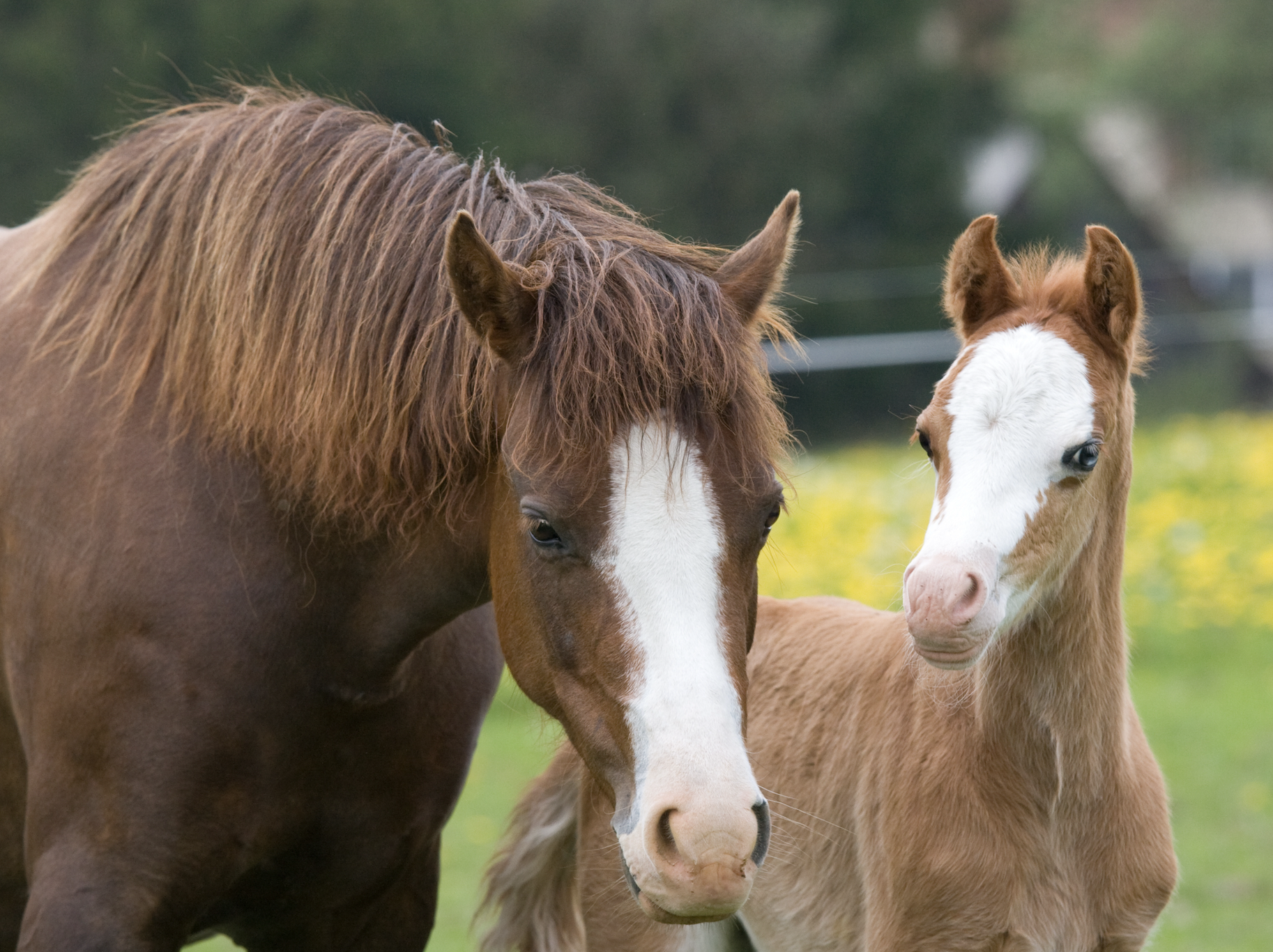Home > Horse Care > Countdown to foaling
Countdown to foaling
- October 15, 2025
- ⎯ Christine Barakat
Listen here:
You’ve watched your mare’s belly growing bigger all winter, and you’re looking forward to welcoming her new foal. The average equine gestation period may be around 340 days, but the normal range can extend from 320 to 365 or more days.
As in human pregnancy, equine gestation is divided into three trimesters: the first (conception to day 114), the second (from day 115 to day 226) and the third (from day 227 to delivery).

Even though these milestones are well established, predicting equine delivery dates can be tricky. But close observation of your mare’s body and behavior can give you some notice that the event is drawing near:
• Last two to six weeks
The udder will swell with milk.
• Last one to two weeks
Her abdomen will significantly drop and widen, and the muscles will become progressively softer and more relaxed around the croup, tailhead and vulva.
• Last four to six days
The nipples will fill with milk.
• Last two to four days
Beads of colostrum, the antibody- and nutrient-rich first milk, will appear on the
tips of the teats, a process called “waxing.”
• Last one to two days
Colostrum may begin to drip from the teats.
• Last two to six hours
The mare may become restless and cranky, and she may begin to sweat and defecate and urinate frequently.
• Foaling time
The mare will lie down and stay down. When the amniotic sac appears in the birth canal and breaks, ejecting its watery contents, foaling is underway.
Be aware that every mare is different and may not fall exactly within these time frames. In some, the signs may be subtle if they occur at all. Regardless you’ll want to make sure you are prepared for your new arrival. And call your veterinarian if you have any doubts or concerns.
Don’t miss out! The free weekly EQUUS newsletter delivers practical and interesting horse health information right to your in basket! If you’re not already receiving the EQUUS newsletter, click here to sign up. It’s *free*!





